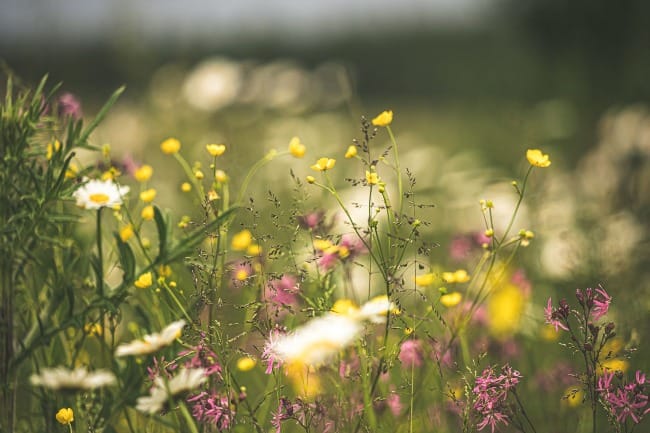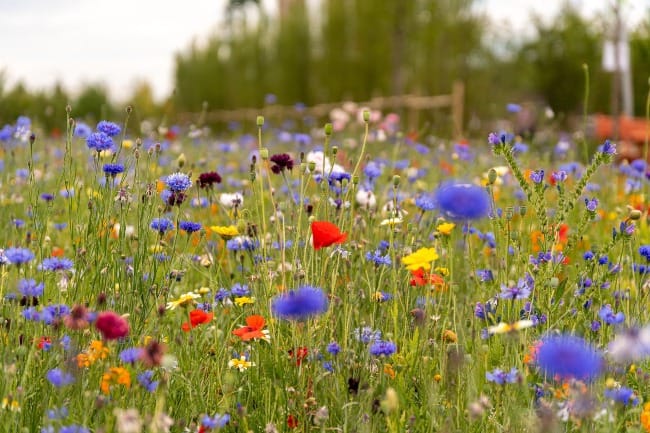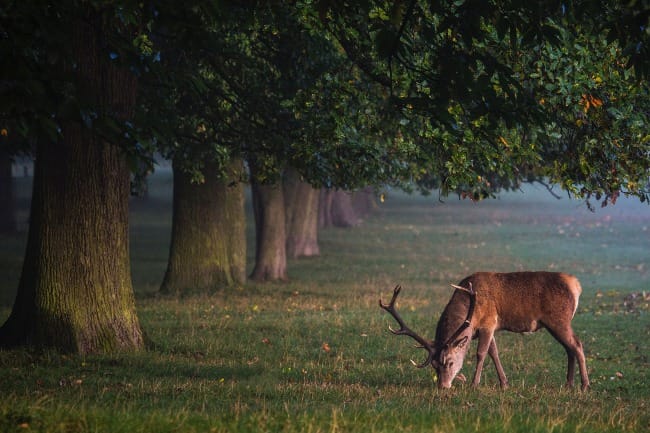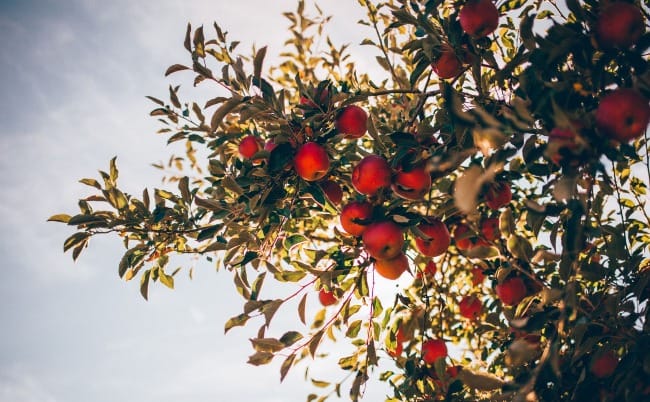S.E. Reid is a freelance writer, editor, and poet living on a patch of wooded wetland in the Pacific Northwest with her craftsman husband and her big black dog, Finn. She loves to hear and tell stories about nature, history, ghosts, and God, and when not writing she loves to cook nourishing food, read widely, and tend to her vegetable garden. Find more of her fiction and nonfiction writing on Substack.
When my husband and I moved to our home on five acres a few years ago and I started gardening for the first time in my adult life, I noticed something interesting: there was very little slug activity in our garden.
I was born and raised in the Pacific Northwest, so I am well-acquainted with the eternal battle between regional gardeners and the common slug. Our mild seasons are a perfect haven for the little moisture-loving mollusks to decimate every plant they can get their mouthparts on.
But over the years, slug activity has been very mild for us, and some years barely noticeable. I certainly saw slugs around, and I experienced the chomping of my smallest seedlings, but the damage wasn’t nearly as bad as I expected. I couldn’t exactly chalk this up to my talents as a gardener, since I was brand new to the gardening game. So what was happening?
Pretty soon, I saw the obvious reason. Our yard–mostly woodland and marshy spots around the edges–was teeming with the slug’s natural predators: frogs, garter snakes, shrews, raccoons, and different types of birds.
Since making this discovery, I’ve thought a lot about pest control. Not as a practical idea, but as a philosophical one. An ecotheological one, even.
There are plenty of articles online that can give you practical eco-friendly pest control methods. That’s not what I’m focusing on, here. Instead, I’d like to put together a short and sweet ethic of pest control that is rooted in Christian stewardship and outlined in three key questions. I’ll also drop a few practical ideas along the way.

Question 1: Who are your neighbors?
When you think of a neighborhood, you think first of the neighbors who make up that neighborhood. A community is a set of individuals. So when you put together an ethic of pest control in your own yard, the first question is: who lives in your yard? And who, broadly, lives in the region that your yard is part of?
There will be certain animals and plants that are ubiquitous, either because they are native to the area or because they are long-established invasive species.
It seems obvious, but it’s worth stating that every animal, insect, and mysterious weed in your backyard has a scientific name and a common name, and that these are things you can learn and remember. It’s hard to care fully about something unless you know its name, so learning more about these living things can have a significant impact on the way you engage with your immediate environment.
Once you know who is around you, you can then take the time to create a yard that is inviting to the things that you want to invite. Just focus on the three main things we all need for basic survival: food, clean water, and shelter.
Every living thing in your yard is part of a wider tapestry of the ecosystem, no matter how frustrating we may find its presence! Knowing where they fit can be the key to managing their presence in your yard.
A bit of knowledge about who you share your garden with can make a big difference. Let's pick one example: bats. When we first moved here, the bats made us nervous because we didn't know much about them. We would see them fluttering around at night and weren't sure: are these pests, or are these beneficial? But after some quick research, we realized that these nocturnal critters can't be beaten for the sheer number of mosquitos they eat! Now, we do everything we can to make sure that the bats feel welcome here. More on that in our next section.

Question 2: What is the purpose of a “pretty” yard?
Much has already been written and said about grass lawns, and how detrimental and, frankly, silly they are. The typical manicured lawn does nothing for the health of your yard, and can even have an actively harmful effect on the creatures who live around you. Not to mention being a tremendous waste of precious water to keep the grass looking pristine!
If you want to create a yard that is inviting to native plants, you have to ask yourself if the aesthetics of a stereotypically “pretty” yard really matter to you, and if so, why?
Instead, consider embracing the meadow. Letting things get a little feral. Planting native trees and shrubs instead of ornamental varieties to encourage the life cycle of native bees, beetles, and butterflies. Or, if you simply must trim things back, wait until late spring (after May is ideal) before mowing your lawn or trimming back old growth, since these are places where beneficial insects often thrive. Allow places where wildflowers (often we call these “weeds”) can flourish, as they are often necessary food for pollinators.
If you want to invite “the good critters that eat the bad critters” into your space, then you need to give them an inviting place to live. And that means letting go of your need for aesthetics, even just a little bit.
Hosting beneficial creatures requires a little bit of forethought, but it doesn't have to be rocket science. Let's get back to the bats as our example. Once we learned more about them, we began to consider them in our seasonal activities. We leave certain non-dangerous dead trees where they are, knowing that the bats like to nest in their cavities. We leave water around the property in easy-to-access containers. We make sure to sweep our wood stove before the bats begin their fall hibernation, so that none of them take up residence in our chimney. These little acts of awareness mean that our bat population is healthy and our mosquitos are kept in check.

Question 3: What can you share?
The tough truth is that we are not the lords of our spaces. The land we live on does not belong to us, no matter how much money we’re paying to live on it. Everything we have belongs to God, and our stewardship hinges on His will.
Have you ever considered that some of what you “pay” when creatures devour your plants is a sort of tithe? A percentage given? A way of giving back?
Believe me, it’s not a fun day when I walk out in the morning to water my garden and discover that the deer have taken big chunks out of my pea plants. It’s frustrating. It’s disappointing. But it’s also fair enough; the deer were hungry. They did not sin against me; the peas were there for the taking.
I can put up deterrents, like fences. And I can build backups into my planting plan, to make sure I have enough in case something gets eaten. That’s my job, as the steward in this situation. It’s not the job of the deer to ignore my garden when they are looking for nourishment. It’s up to me to show them grace.
Part of being a good steward is understanding that sacrifice is necessary. Unpleasant, but necessary. It is the tithe we pay for living on this land, surrounded every day by impossible providence.

To Conclude: Shifting Perspective
When we bought our house, the previous owner walked me around the garden. She had lived in the house for about thirty years and was justifiably proud of how beautifully she had laid out the yard, bits and pieces of manicured beauty surrounded by woodland. As she pointed out some of the lovely things she had planted, I’ll never forget what she said when she showed me the well-established apple tree.
“Sometimes the deer and raccoons get to ‘em,” she said, smiling. “But I don’t mind. We have plenty to share.”
And every year, that has been true. The apple tree is abundant, and I could never use every piece of fruit that falls from its branches, no matter how much cider and applesauce I make. I believe by viewing it so compassionately, the previous owner placed an unwitting blessing on that tree. One that I try to continue onward.
Building an ethic of pest control is about shifting perspective away from “good plant, bad plant” or “good critter, bad critter.” Instead, it’s about seeing the whole as God sees it: a good Creation.
We have plenty to share.
S. E. Reid